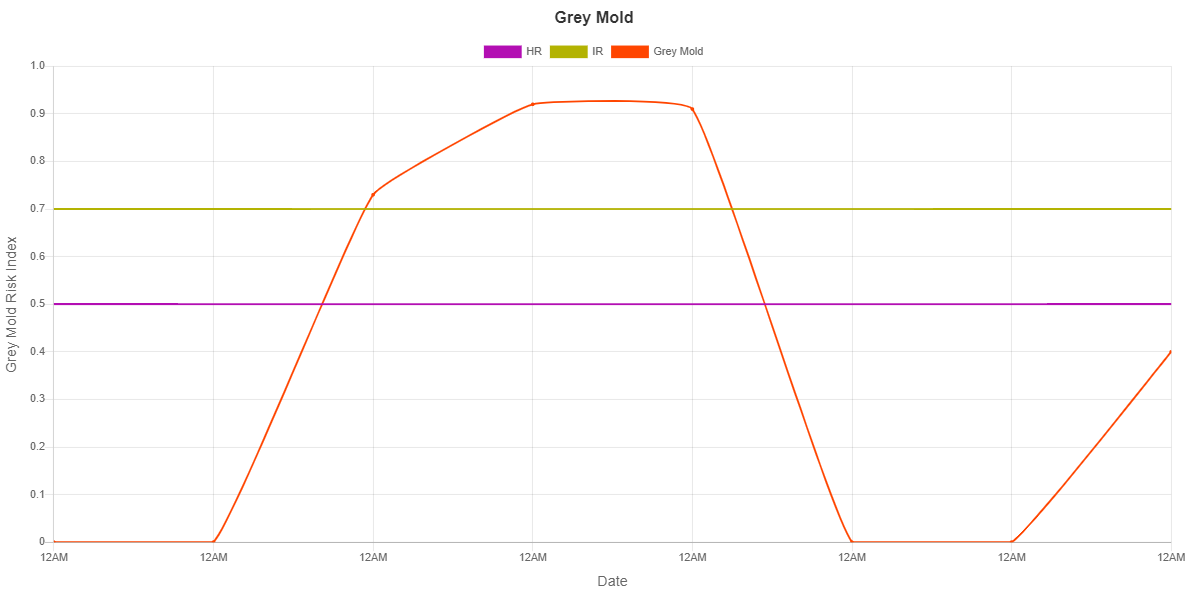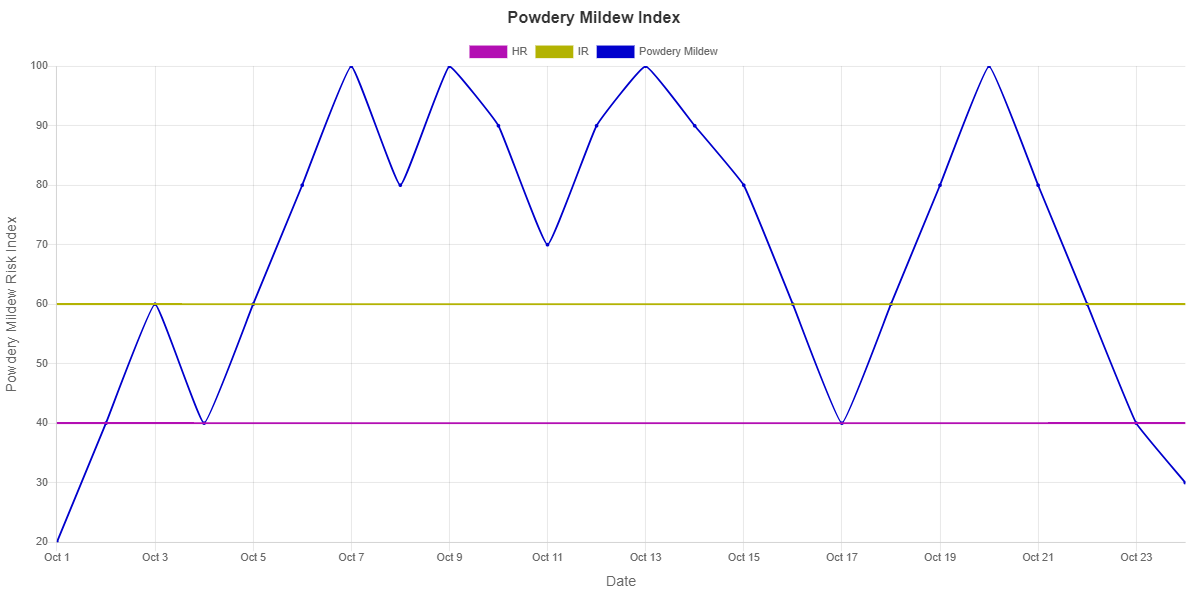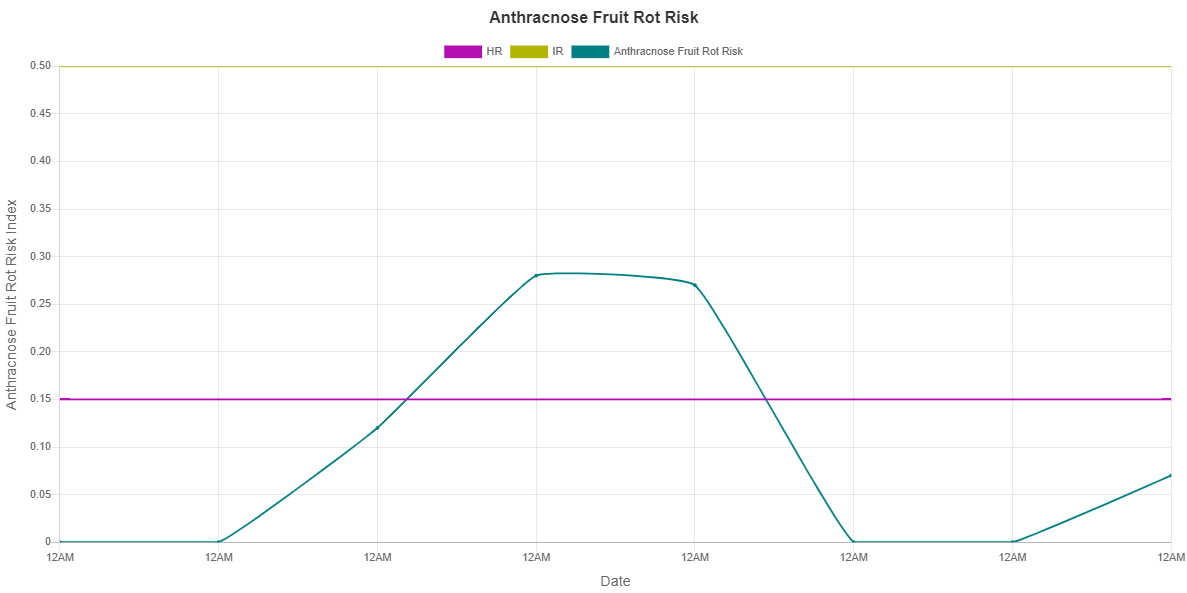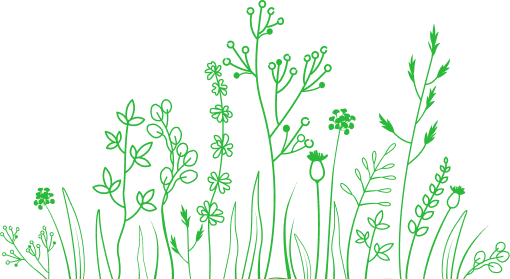How Can the Data Help You Make Decisions?
The Botrytis Risk Index breaks down into three simple risk categories:
Low Risk (0.5 and below): No need to worry—you can stick with your regular routine.
Intermediate Risk (0.5 to 0.7): Time to start paying closer attention. Monitor conditions carefully and watch for any changes.
High Risk (above 0.7): This is where you need to take immediate action. Whether it’s boosting airflow, lowering humidity, or applying fungicides, acting quickly can save your crop.
With this data-driven approach, you’re not guessing—you’re making informed decisions to protect your crops, reduce losses, and ensure better yields.




